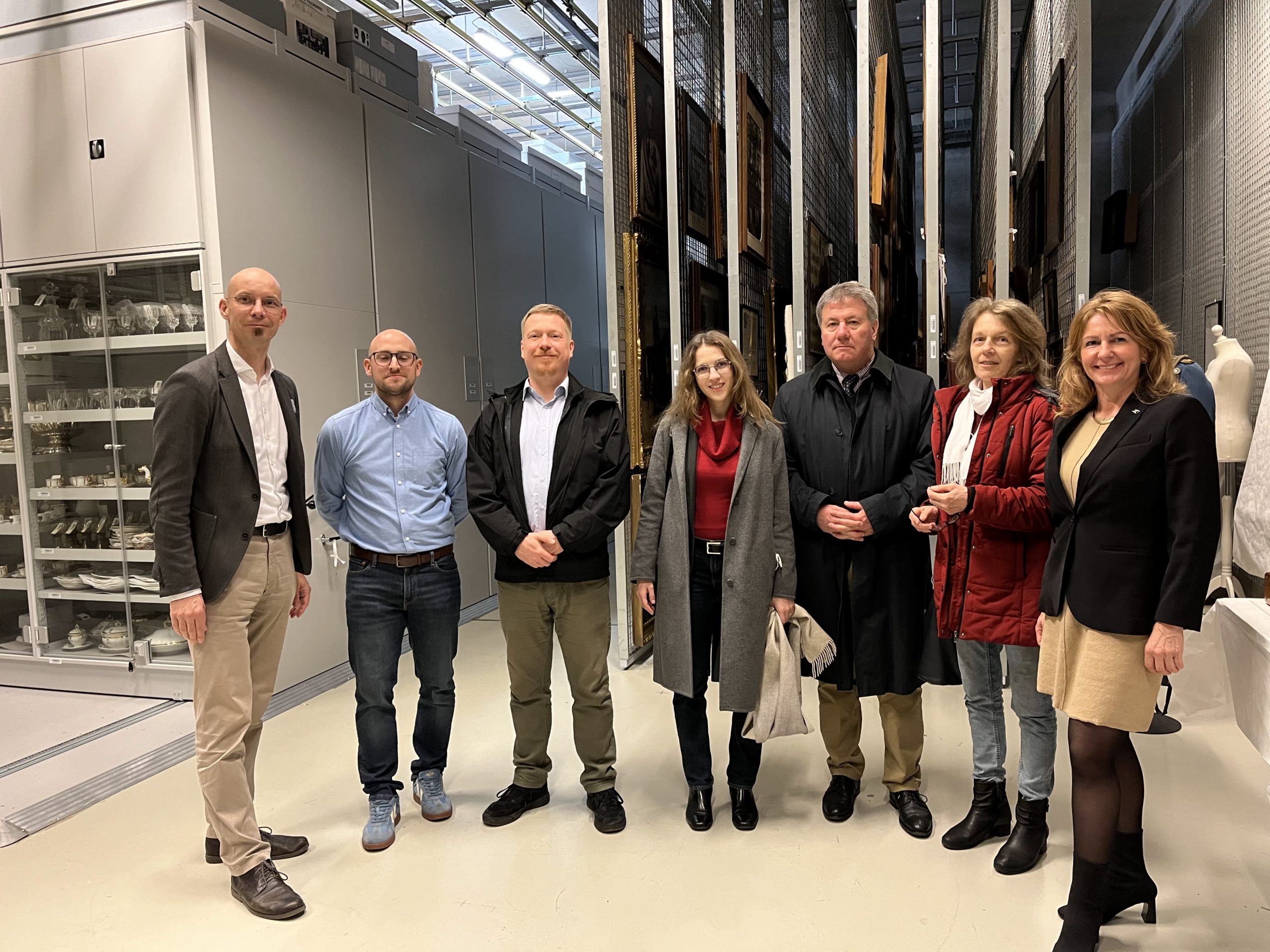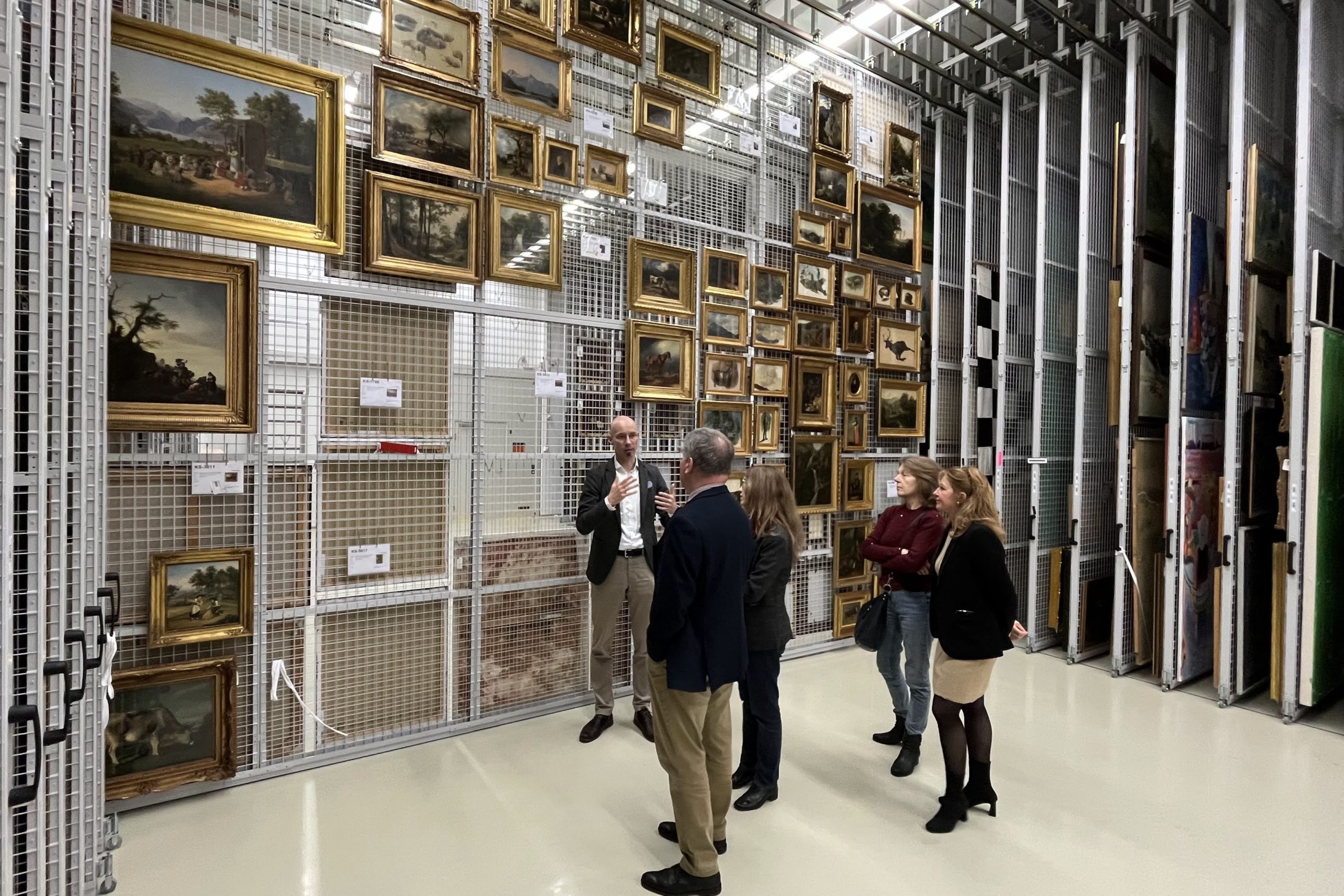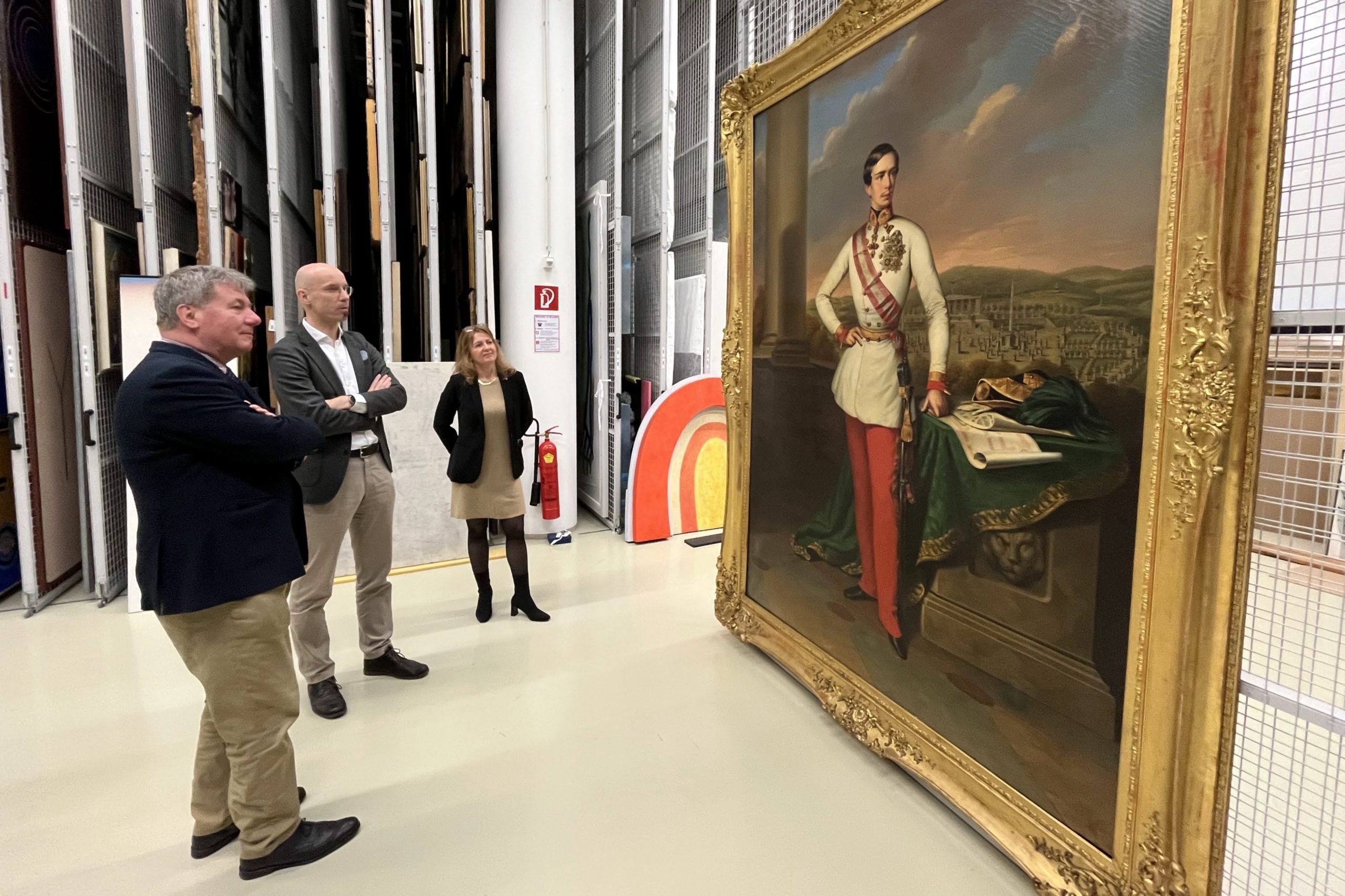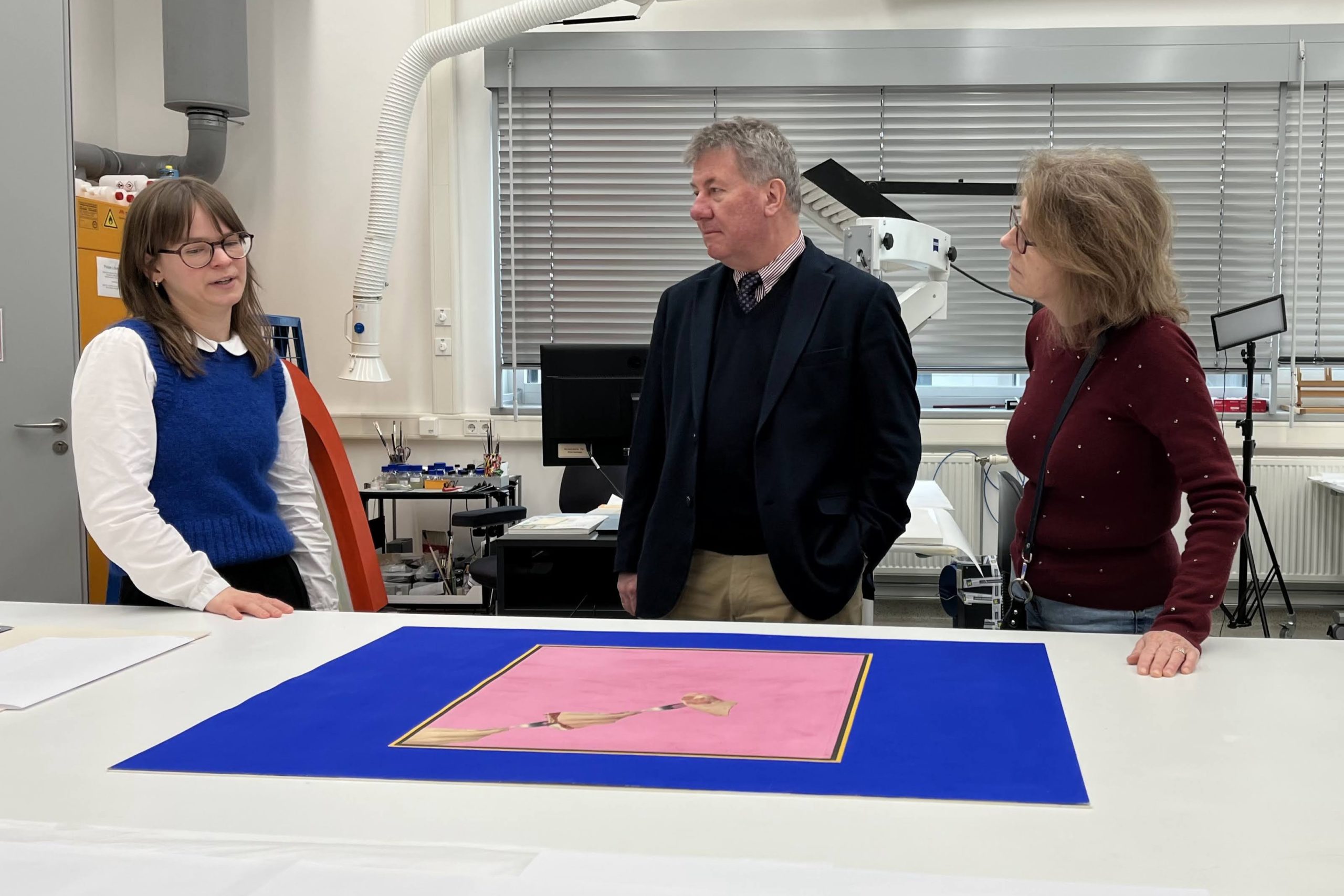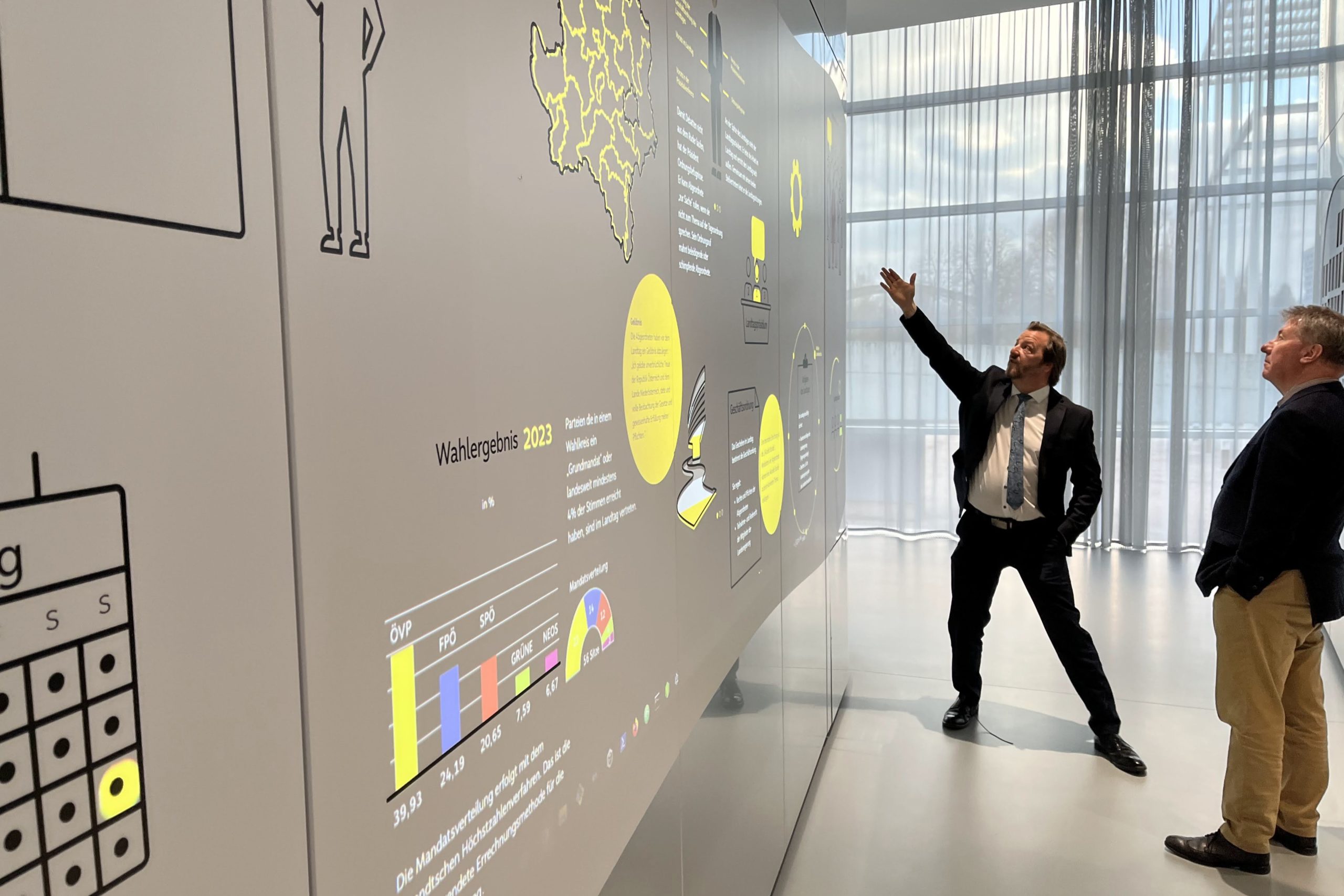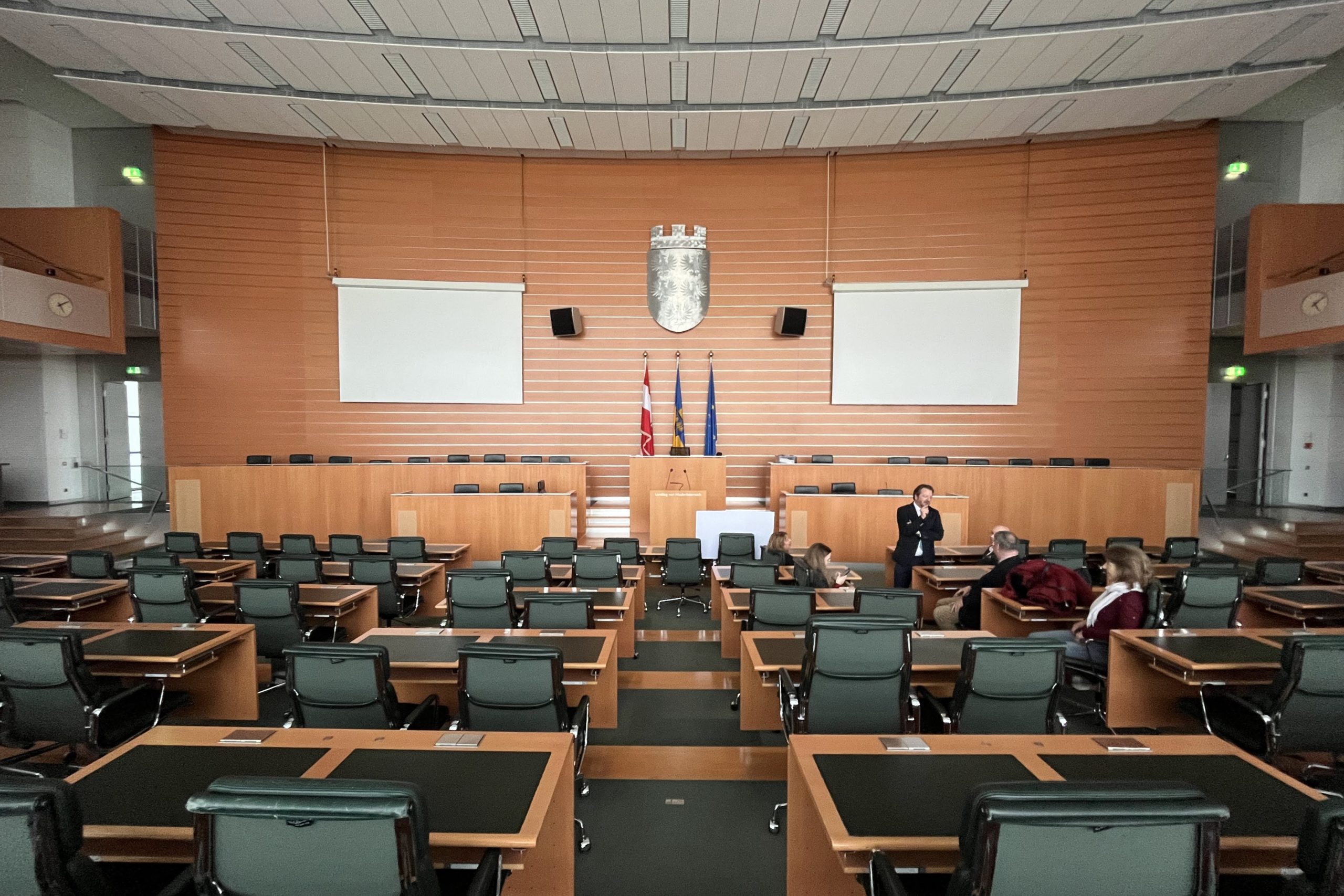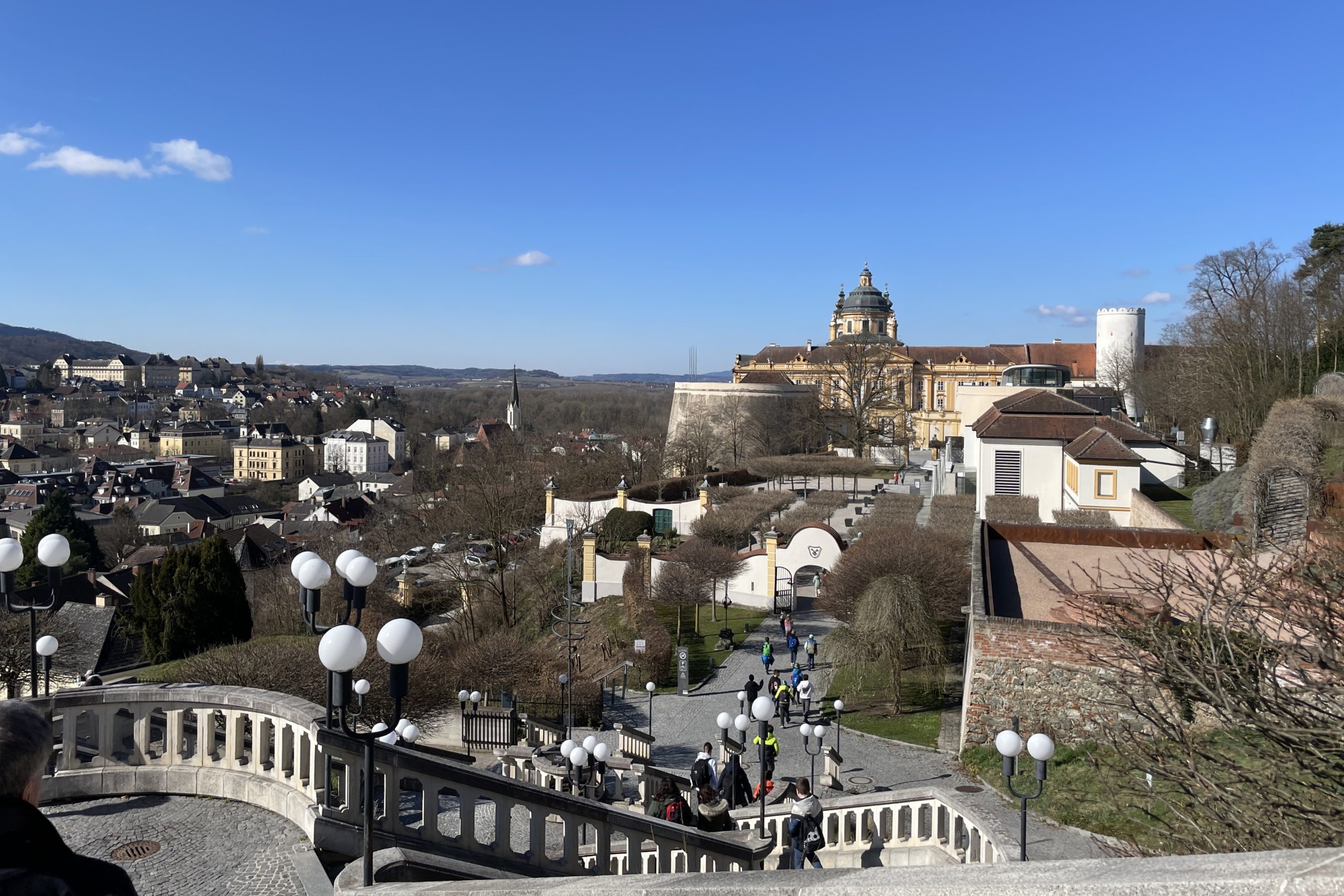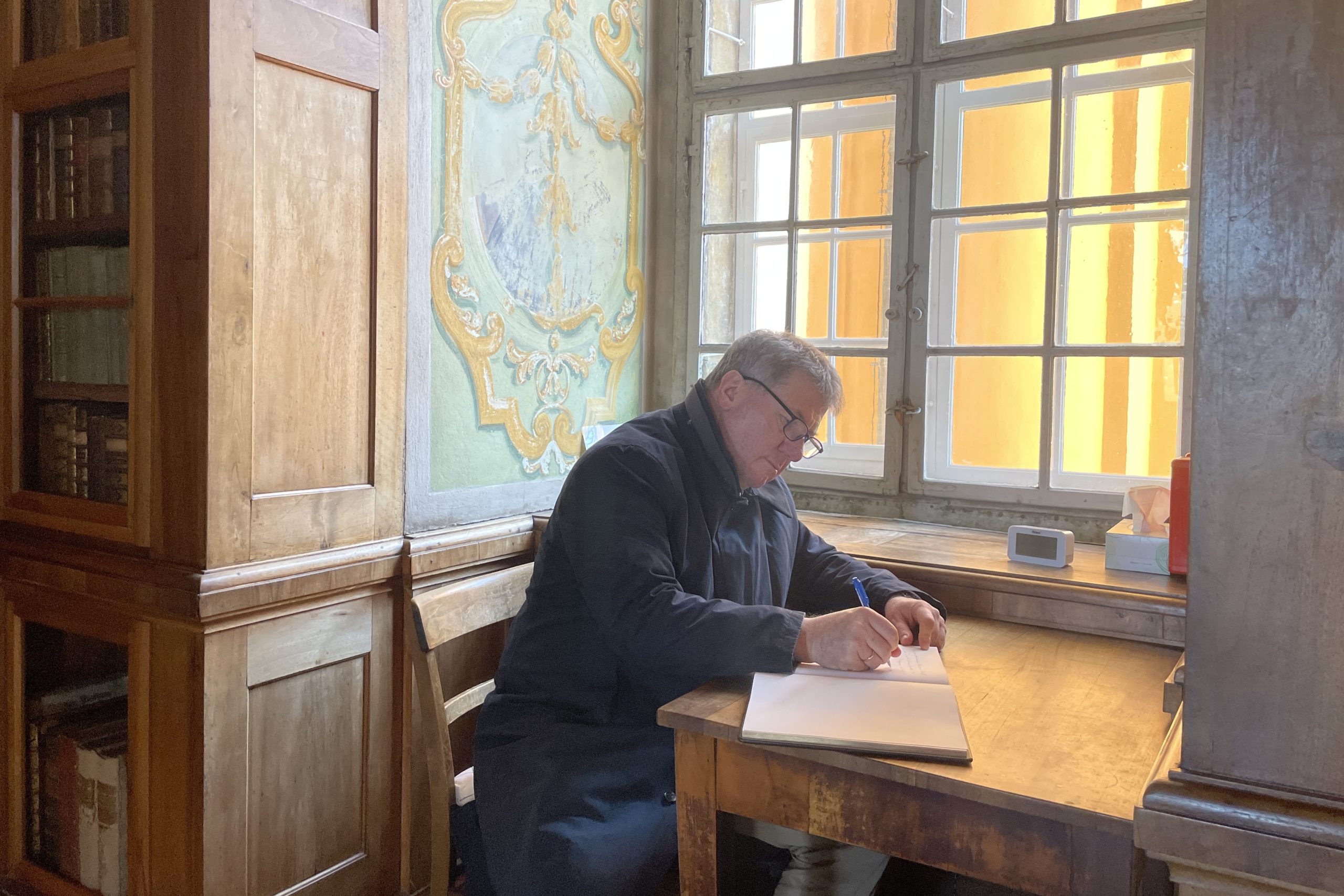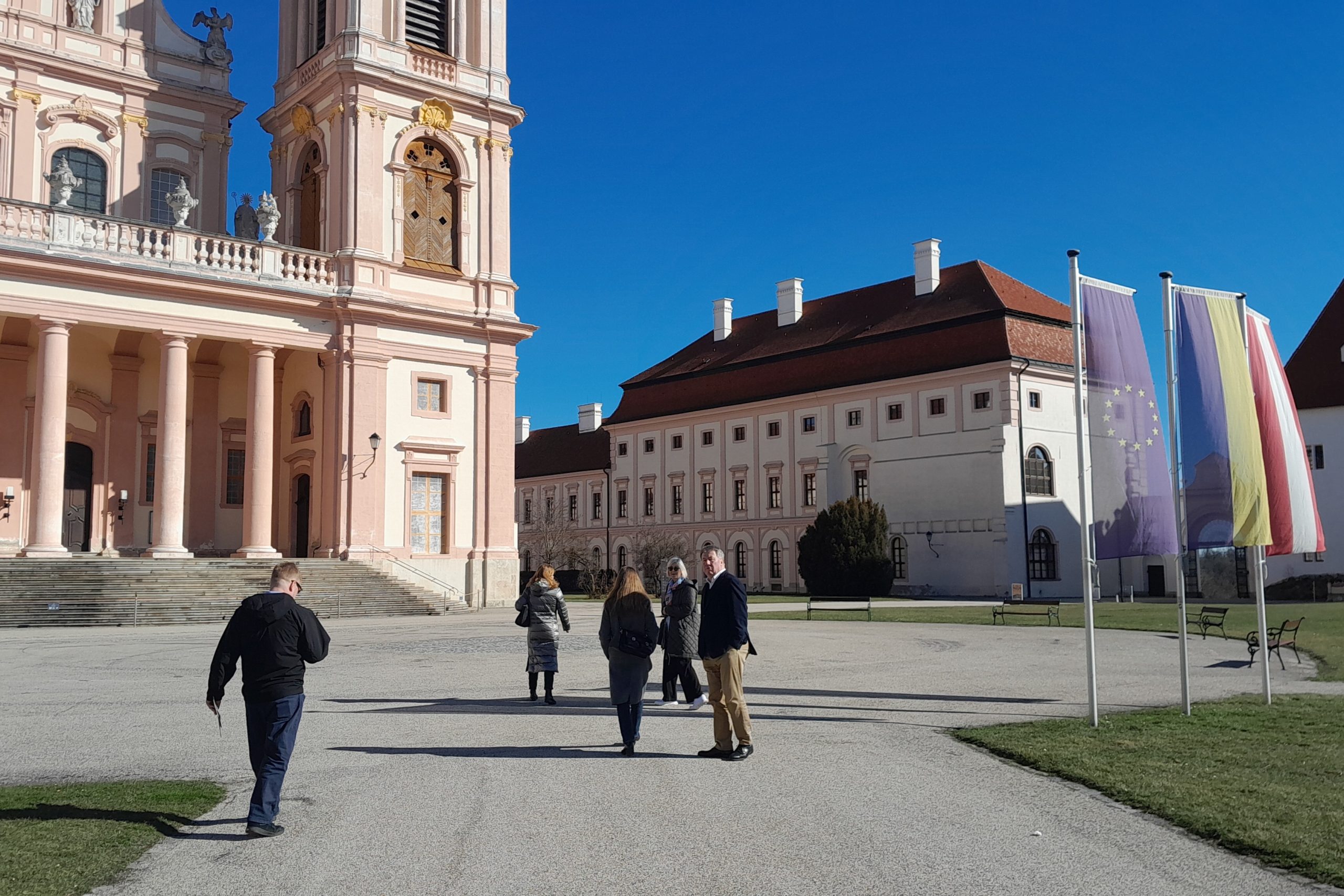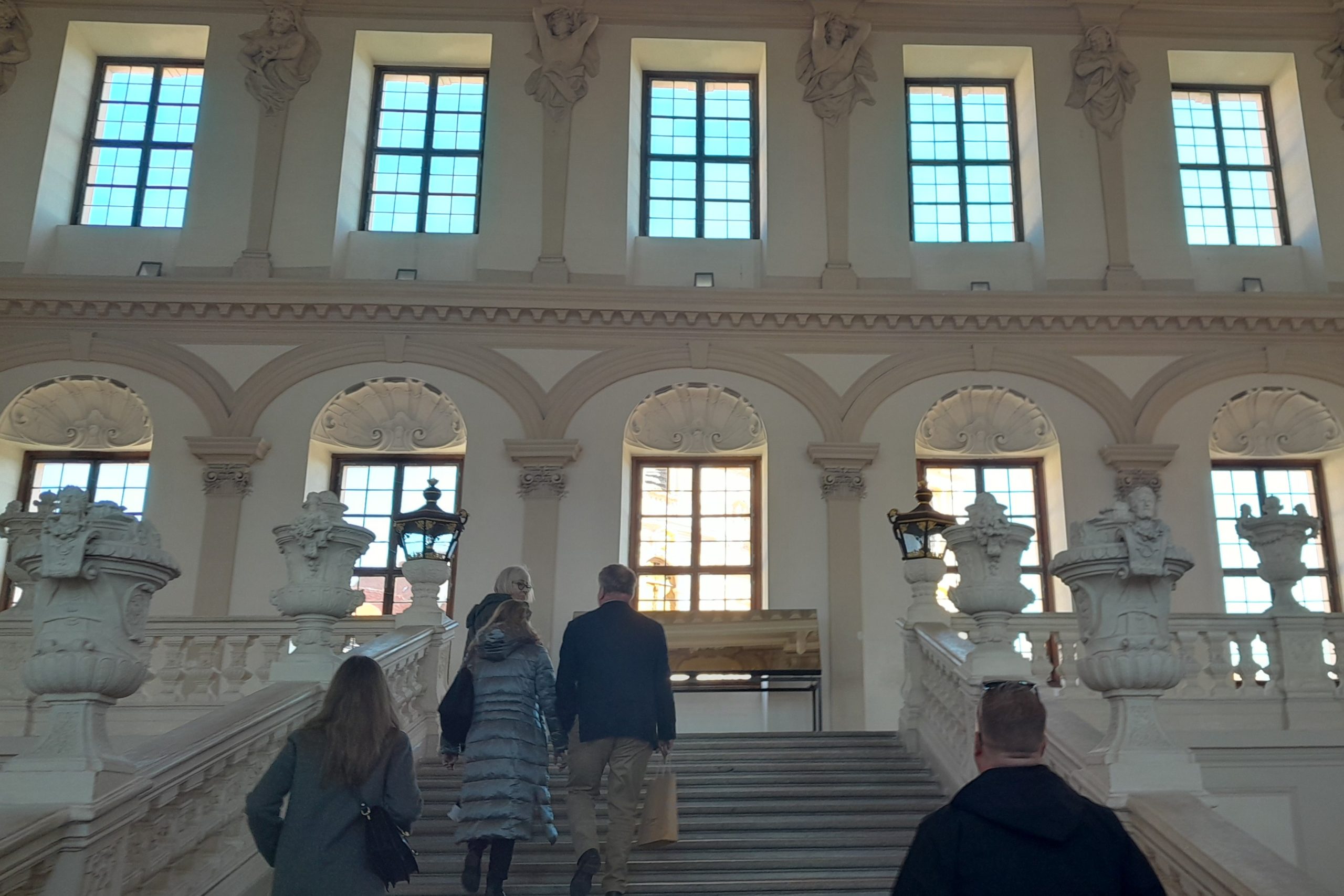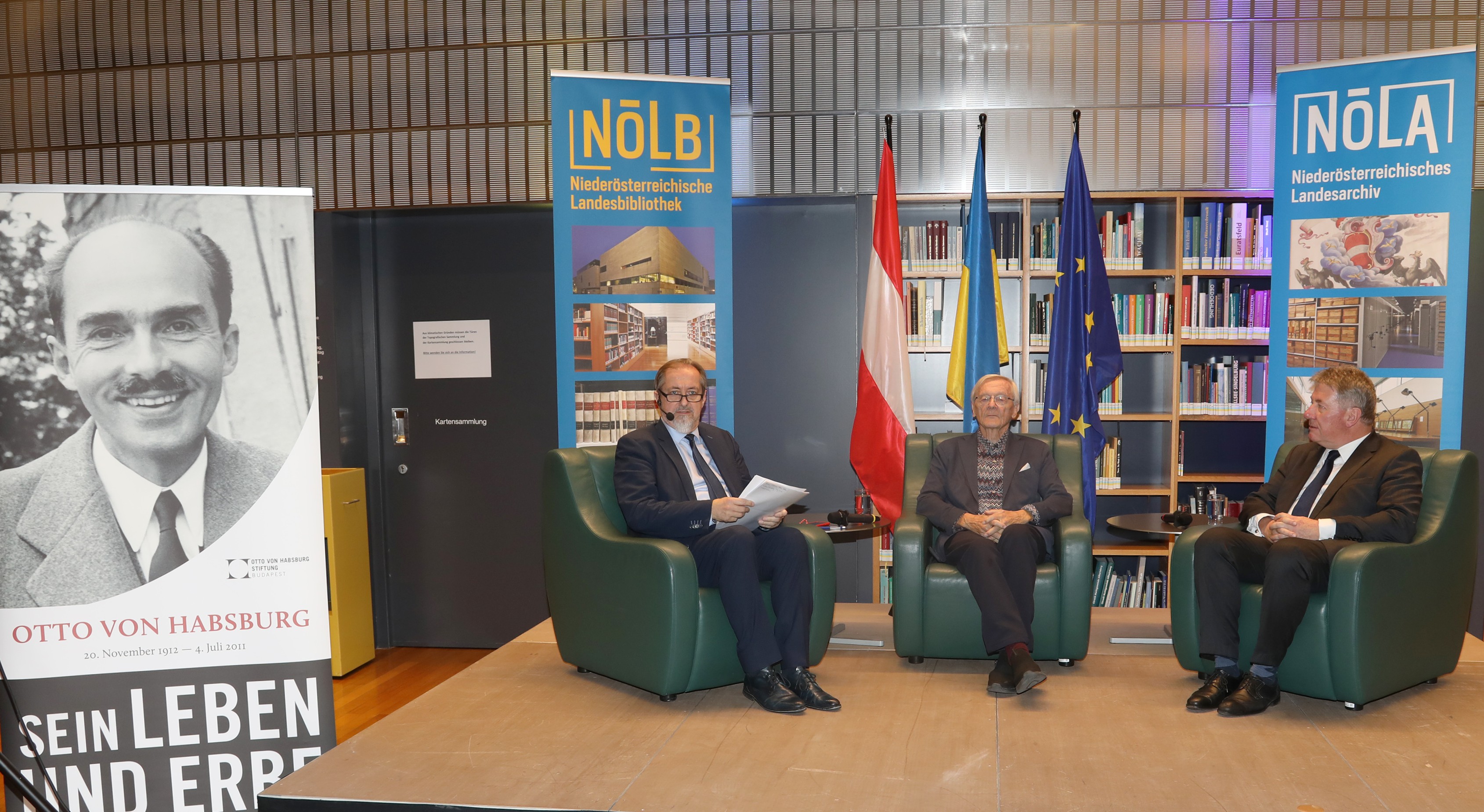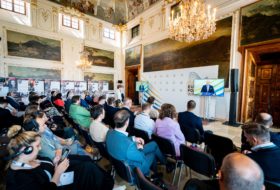The region played an important role in the history of the Habsburg dynasty: the final resting place of Emperor Maximilian I is Wiener Neustadt, while Otto von Habsburg was born in Reichenau, a town also located in the federal state. Consequently, the public collections of the province contain a significant number of objects and documents relating to the history of the dynasty.
Hermann Dikowitsch, Head of the Arts and Culture Department of the Office of the Lower Austrian State Government, and Katka Krejcova, representative of the Arts and Culture Department for international relations, explained that a commitment to the common past and the cultivation of relations with Hungary and Central Europe were of great importance to the State Government. Armin Laussegger, Head of the Sankt Pölten-based State Collections of Lower Austria (Landessammlungen Niederösterreich), described how the central collection system supported the operation of Lower Austrian exhibition spaces by, on the one hand, providing the highest possible standards of processing, storage and digitisation systems in line with 21st century requirements, and on the other hand enabling museums and exhibition spaces to exhibit artefacts on a short or long-term basis. The hosts presented the so-called “Kaiserhaus” collection, the most extensive archive of the life of the former royal family to be found outside Vienna. Possible cooperation between the two institutions for future exhibitions was raised, as there are many interconnections between our collections. We also had a brief glimpse into the permanent exhibitions of the Museum Niederösterreich.
Our next stop was the State Parliament and its visitor center, the Forum Landtag, where we were introduced to Lower Austria’s state politics through a unique, digital exhibition, and were guided by the Director of the institution, Thomas Obernosterer. In the end, we also had a look into the assembly hall of the State Parliament.
On Tuesday, we visited two of the province’s most famous Baroque complexes: the Benedictine monasteries in Melk and Göttweig. The latter will be the venue for the closing event of this year’s Europaforum Wachau in June, where we are planning to present a roll-up exhibition on the life of Otto von Habsburg. The 30th anniversary of Austria joining the European Union and the fact that Otto von Habsburg did much to ensure his homeland’s successful accession, offer a good context for this event.
The trip to Austria provided an excellent opportunity to discuss joint projects and future collaboration.
